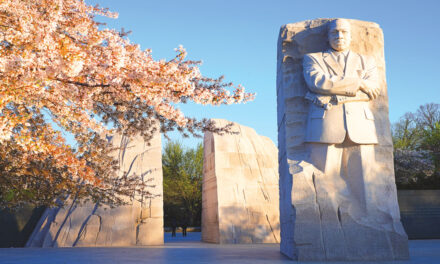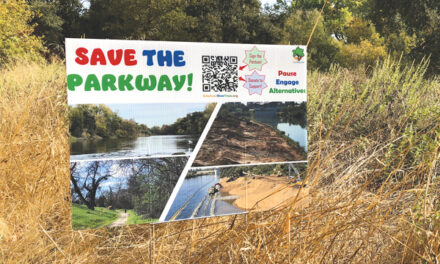For more than a year, American River Parkway supporters have called for a redesign of erosion- control plans by the U.S. Army Corps of Engineers.
The Army Corps intends to bulldoze through fragile river parkway landscape, destroy riparian habitat, replace shoreline with rock and rubble, and threaten countless wildlife to protect the city from floods. The project, called Contract 3B, runs from the Howe Avenue bridge to east of Watt Avenue.
But when a draft environmental impact report generated negative comments from the public and agencies—as many as 1,900 letters—the Army Corps postponed its work until 2026.
Is this a procedural dodge or a serious re-evaluation of the Army Corps’ plans?

“Hopefully they will see there is plenty of room for major improvements and make significant design changes,” says Pete Spaulding with American River Trees, a local citizen’s group. “We’ll use this additional time to push for a true pause, not just a delay.”
American River Trees wants the Army Corps to develop a less-destructive plan, citing the work will create “massive damage” to the parkway.
The lower American River is among 200 free-flowing rivers and streams throughout the nation protected by the Wild and Scenic Rivers Act.
Protected waterways are identified for their scenic, recreational, geologic, wildlife, historic and cultural values. The wild and scenic designation is the nation’s strongest protection for rivers.
County Supervisor Rich Desmond, in a recent report to constituents, says he is “confident that the work is necessary.” He believes the erosion-protection measures along the river are “commensurate with standards set by the Wild and Scenic Rivers Act.”
Liz Bellas disagrees. She is director of the county’s Department of Regional Parks, responsible for ensuring the work is consistent with wild and scenic management requirements.
In her 51-page comment letter to the Army Corps, Bellas says, “Our conclusion is that the project within the American River Parkway, as proposed, does not meet this standard.”
Bellas says the draft environmental impact report is “replete with errors and inconsistencies” with “no meaningful alternative” for bank protection or mitigation.
The Wild and Scenic Rivers Act promotes public participation when addressing river protection. Desmond says, “there has been and continues to be extensive outreach and education about the project.”
Bellas says the process for involving the public and responsible agencies was “inadequate for meaningful involvement in the planning process.”
American River Trees also disagrees with Desmond. “There was little to no outreach to the public,” the group tells the supervisor. “There were no advance neighborhood mailings, no public meetings.”
While the Army Corps made several public presentations, “they rarely answer questions or engage in any two-way, live conversation,” American River Trees says.
Representatives with American River Trees requested meetings with Cols. Chad Caldwell and James Handura of the Army Corps’ Sacramento District. They were denied.
Desmond reports the Lower American River Bank Protection Working Group includes federal, state and county agencies and nonprofit groups working together to evaluate the erosion-protection work.
American River Trees notes, “Participation does not equal approval or support.” The group says federal, state and county agencies, and parkway advocates, such as Save the American River Association, identified “serious shortcomings in the project and draft environmental reports.”
Desmond tells constituents vegetation removal is required for erosion protection. The Army Corps plans to remove shrubs, brush and up to 700 trees, including heritage oaks.
American River Trees says trees and vegetation will take years to regrow, making the community less safe. The group cites “Best Practices for Vegetation Management on Levees,” prepared by the Corps and FEMA, and released this year. Per the document, “the right mix of well-established native vegetation can help reduce soil erodibility …. Dense, interwoven root systems can physically stabilize riverbanks and slopes.”
In Regional Parks’ comment letter, Bellas says, “the impacts of bank protection to existing oak woodland and riparian habitat and recreation … are either mischaracterized or ignored.”
Construction at rivers designated as wild and scenic must preserve their free-flowing condition. Demolition must protect water quality. The immediate environment must be safeguarded.
Designated as wild and scenic in 1981, the American River extends from its confluence with the Sacramento River to Nimbus Dam. “This short stretch of river, flowing through the city of Sacramento, is the most heavily used recreation river in California,” the National Wild and Scenic River System says.
“We firmly believe we can get erosion control, flood protection, and a wild and scenic American River,” says Spaulding of American River Trees. “Let’s do it right.”
Cathryn Rakich can be reached at crakich@surewest.net. Follow us on Facebook and Instagram: @insidesacramento.
















